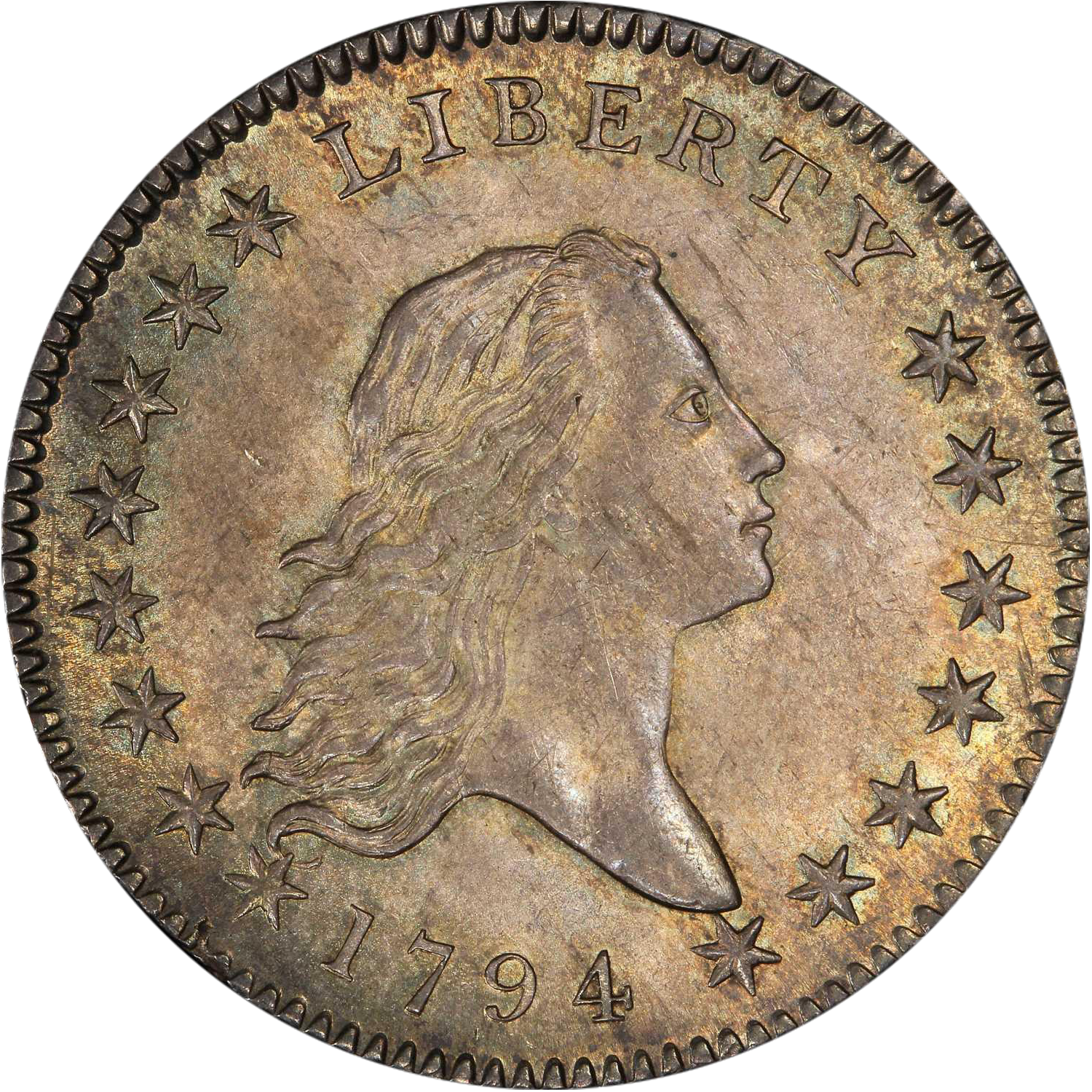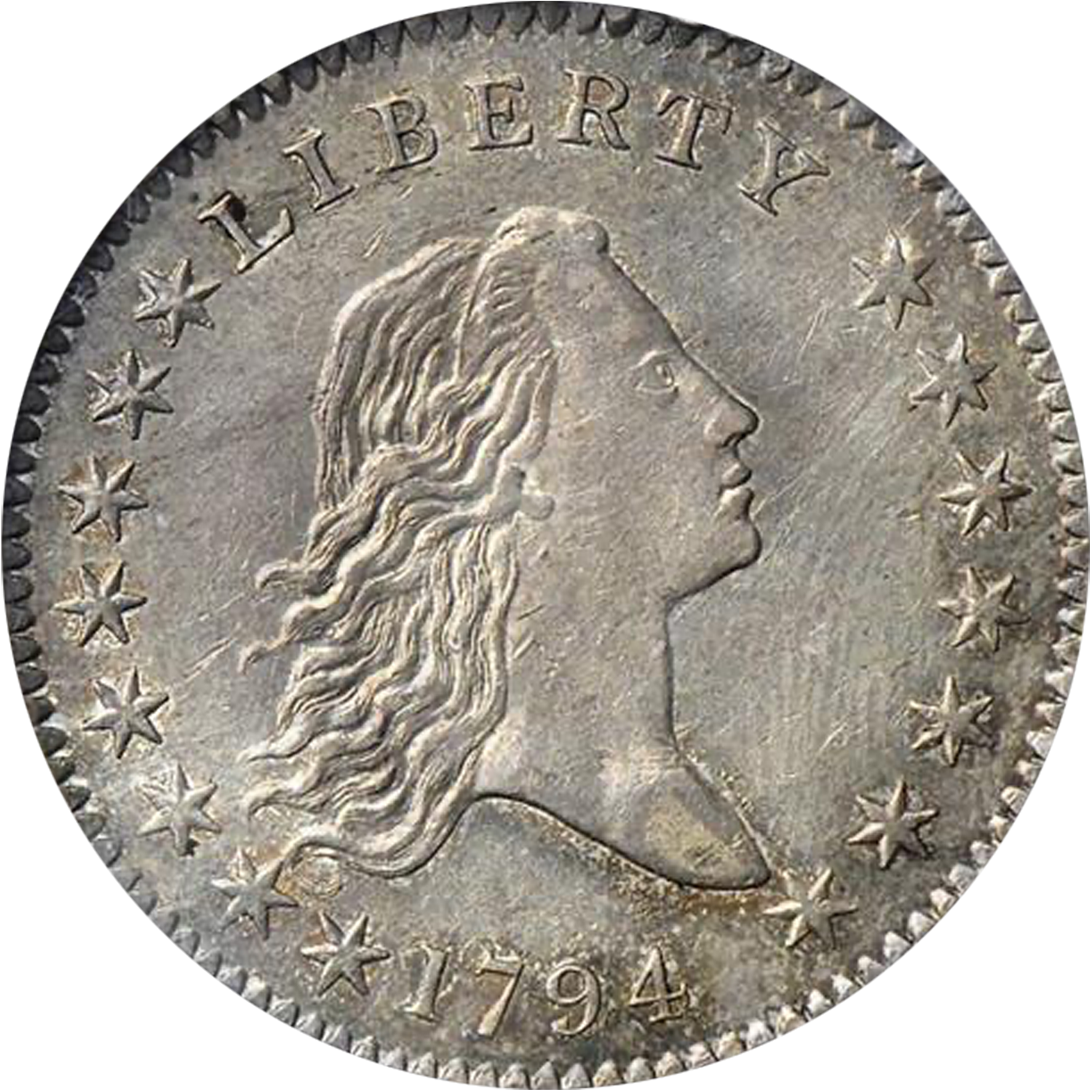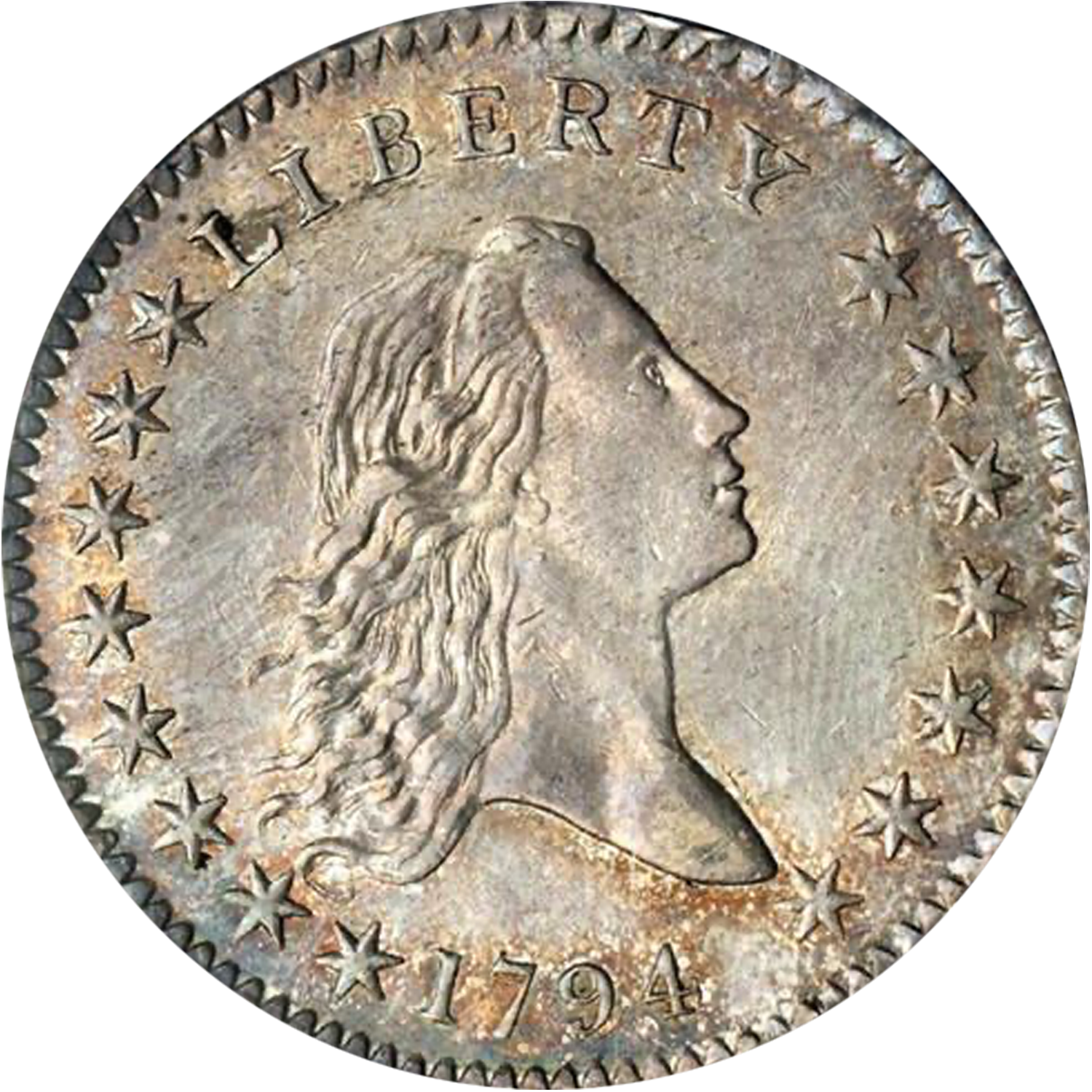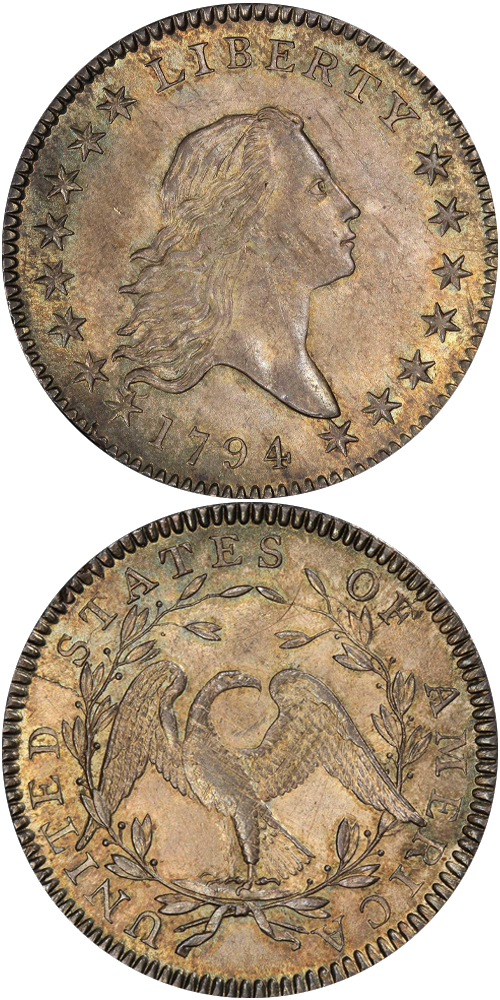1794 Flowing Hair Half Dollar
The half dollar is one of our most enduring denominations, first produced in 1794 and struck with every date since but for about a dozen. After coinage of silver dollars ended in 1804 the half dollar denomination flourished and fueled the engine of American trade in those years. Average mintages between 1825 and 1835 were higher than any decade until the 1870s. Over six million half dollars were made annually in 1835 and 1836; mintages that high would not be seen again for consecutive years until the centennial in 1876. Today, the half dollar is a largely forgotten denomination, coined for collectors and occasionally seen at blackjack tables, but a novelty in circulation. The Kennedy halves of today can trace their lineage back to this small issue in 1794.
The half dollar, upon its conception, was a nod to tradition. Dimes were cutting edge, the tenth that fit into Jefferson’s revolutionary decimal scheme. Dollars were conservative, a copyist’s attempt to produce a Spanish milled dollar (also known as eight reales) that would feature the new nation’s designs and mottos. The half dollar is just a step removed from that ethic, copying the Spanish four reales, a fractional piece that fit ideally into the Spanish system but clumsily into our decimal plan. The most popular coin from the Spanish dominions in early America was the two reales, with the value of a quarter, whereas far fewer four reales were produced in the Spanish mints of Central and South America and a concomitantly small number of this denomination circulated in the United States.
The example to the left was sold by Stack's Bowers Galleries in the D. Brent Pogue Part I Auction, where it realized $763,750.
1794 Flowing Hair Half Dollar Auction Highlights
 PCGS MS-64 Sold for $763,750 View Lot 1095 |  PCGS AU-58 Sold for $287,500 View Lot 2003 |  PCGS AU-58 Sold for $253,000 View Lot 547 |






